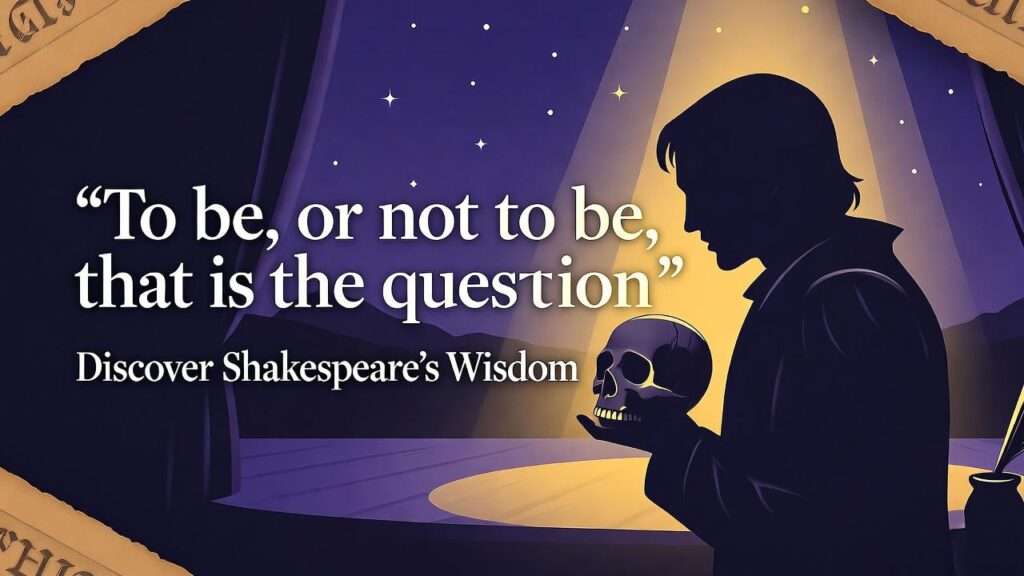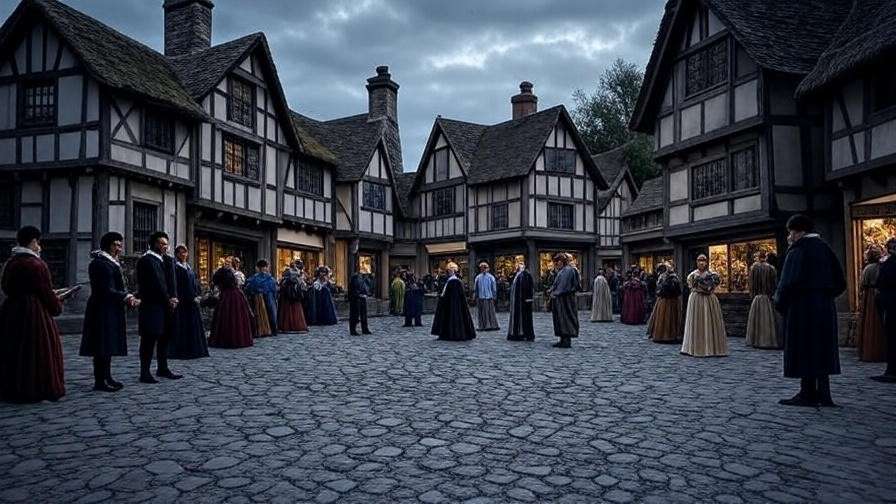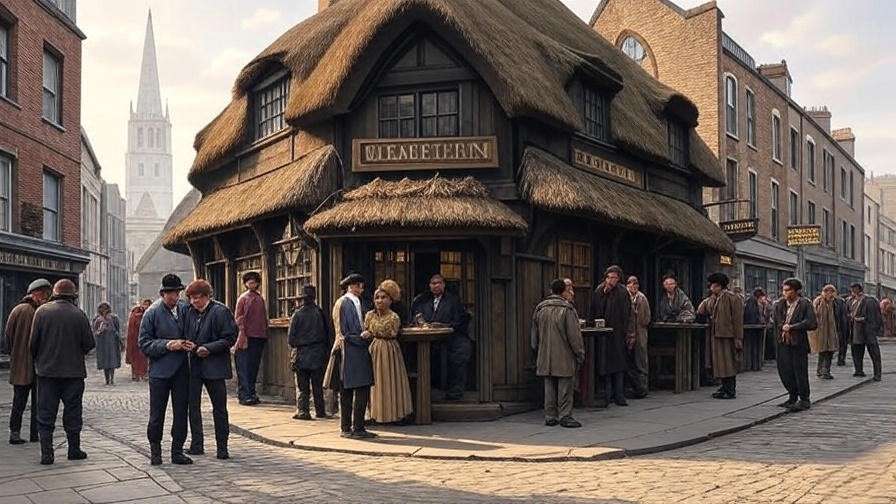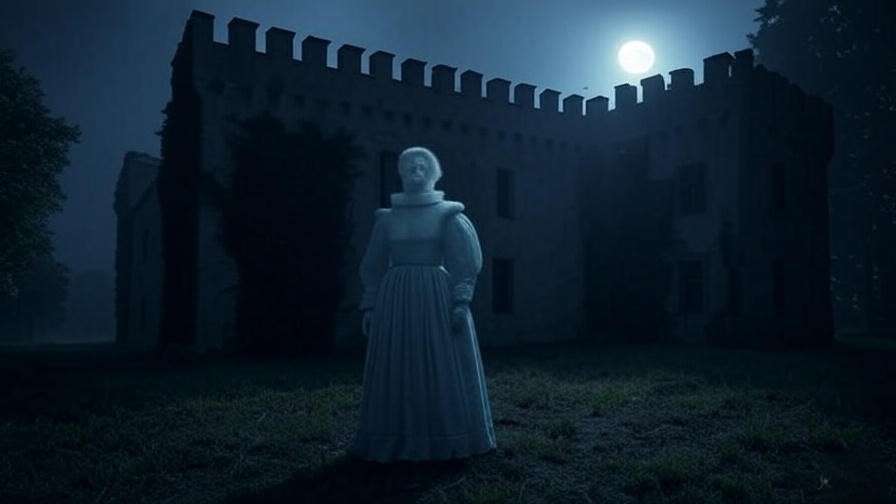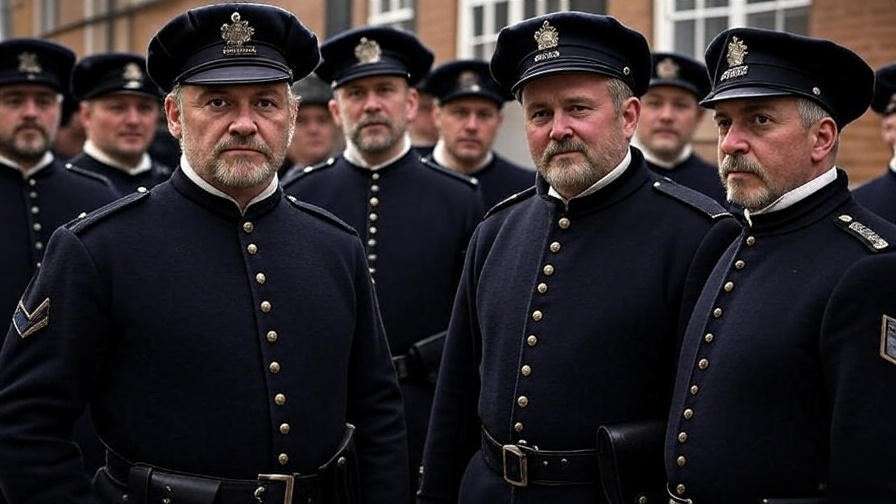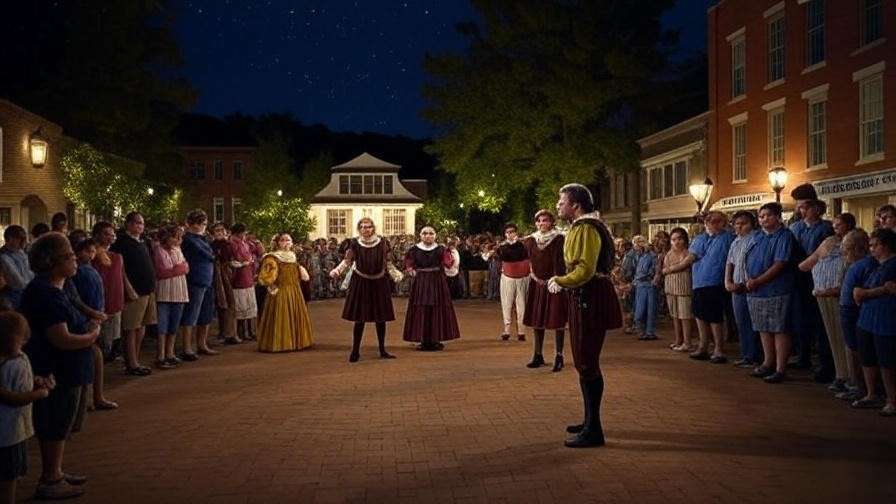Imagine standing in the Globe Theatre in 1601, the air thick with anticipation as Hamlet, Prince of Denmark, steps forward to utter the immortal words, “To be, or not to be, that is the question.” These famous quotes about Hamlet have echoed through centuries, capturing the hearts of audiences, scholars, and readers alike. Why do these lines from William Shakespeare’s masterpiece resonate so deeply? Whether you’re a student dissecting the play for an essay, a theater enthusiast marveling at its language, or someone seeking wisdom for life’s big questions, Hamlet’s quotes offer profound insights into the human condition. In this comprehensive guide, we’ll explore the most iconic quotes from Hamlet, unpack their meanings, and reveal their relevance to modern life. As a Shakespeare scholar with over a decade of studying and teaching his works, I’ll draw on historical context, theatrical insights, and expert analyses to bring these words to life, ensuring you leave with a deeper appreciation of Shakespeare’s genius.
Why Hamlet’s Quotes Resonate Across Centuries
The Universal Appeal of Hamlet’s Themes
Hamlet is more than a play—it’s a mirror reflecting humanity’s deepest struggles. Its themes of existentialism, morality, betrayal, and indecision speak to readers across generations. Take the line “To be, or not to be, that is the question” (Act 3, Scene 1). This isn’t just a meditation on life and death; it’s a question we all face when wrestling with purpose or fear of the unknown. Whether you’re a student navigating career choices or an adult grappling with life’s uncertainties, these words resonate. The play’s exploration of universal questions ensures its quotes remain relevant, offering wisdom for personal reflection or academic study.
Shakespeare’s Mastery of Language
Shakespeare’s genius lies in his ability to craft language that is both poetic and accessible. His use of iambic pentameter, vivid metaphors, and rhetorical flourishes makes Hamlet’s quotes unforgettable. For example, “Brevity is the soul of wit” (Act 2, Scene 2) is concise yet packed with irony, as Polonius rambles on while proclaiming the value of brevity. This linguistic precision, combined with emotional depth, makes Hamlet’s lines quotable in contexts ranging from literature classes to modern social media captions. Shakespeare’s words are a masterclass in balancing beauty and meaning, ensuring their place in literary history.
Cultural and Historical Impact
Hamlet has left an indelible mark on culture, from classic theater productions to modern adaptations like Disney’s The Lion King. Its quotes have been referenced in films, books, and even political speeches, cementing their status as cultural touchstones. Renowned scholar Harold Bloom, in his book Shakespeare: The Invention of the Human, argues that Hamlet’s language “defines how we think about ourselves.” This cultural staying power amplifies the appeal of famous quotes about Hamlet, as they bridge the gap between Elizabethan England and today’s world, offering insights into everything from human psychology to ethical dilemmas.
The Most Famous Quotes About Hamlet and Their Meanings
“To be, or not to be, that is the question” (Act 3, Scene 1)
Context: In this iconic soliloquy, Hamlet contemplates life, death, and the fear of what lies beyond. Spoken in the midst of his feigned madness, the quote captures his internal struggle over whether to endure suffering or end it through death.
Analysis: The line’s philosophical depth lies in its exploration of existentialism. The phrase “to be” represents existence, while “not to be” suggests oblivion. Hamlet weighs the pain of life—“the slings and arrows of outrageous fortune”—against the uncertainty of death, “the undiscovered country.” This tension resonates with anyone facing a life-altering decision.
Modern Relevance: Today, this quote is often invoked in discussions of mental health, as it captures the anguish of existential crises. It’s also a staple in pop culture, appearing in films like Dead Poets Society and TV shows like Star Trek. For students, it’s a gateway to analyzing Shakespeare’s views on mortality and agency.
“There is nothing either good or bad, but thinking makes it so” (Act 2, Scene 2)
Context: Hamlet speaks this line to Rosencrantz and Guildenstern, suggesting that perception shapes reality. Trapped in Denmark, which he calls a “prison,” Hamlet reveals his belief that our mindset defines our experience.
Analysis: This quote underscores the play’s theme of subjectivity. Hamlet’s words challenge the idea of absolute morality, suggesting that good and evil are constructs of the mind. It’s a profound commentary on perspective, especially in a play filled with deception and moral ambiguity.
Modern Relevance: This idea aligns with modern psychological concepts like cognitive reframing, where shifting one’s perspective can alter emotional outcomes. It’s a reminder for readers to question their assumptions, whether in personal relationships or societal debates.
“Brevity is the soul of wit” (Act 2, Scene 2)
Context: Polonius, the verbose courtier, ironically declares this while delivering a long-winded speech to Claudius and Gertrude about Hamlet’s madness.
Analysis: The humor lies in Polonius’s failure to embody the brevity he praises. The quote critiques ineffective communication while highlighting Shakespeare’s knack for embedding irony in dialogue. It’s a subtle jab at those who overcomplicate simple truths.
Modern Relevance: In today’s fast-paced digital world, this quote resonates as a call for clear, concise communication. Writers, marketers, and social media users can draw inspiration from it to craft impactful messages. It’s also a favorite in educational settings for teaching rhetorical devices.
“The lady doth protest too much, methinks” (Act 3, Scene 2)
Context: During the play-within-a-play, Gertrude comments on the Player Queen’s exaggerated vows of loyalty, unaware that the performance mirrors her own actions.
Analysis: This line exposes hypocrisy and self-deception, as Gertrude’s discomfort hints at her guilt. It’s a masterful example of dramatic irony, where the audience knows more than the character. The quote also critiques performative behavior, a theme that runs throughout Hamlet.
Modern Relevance: This phrase is often used to describe overzealous denials in politics, media, or personal interactions. It’s a lens for analyzing authenticity, making it relevant for discussions about trust and transparency in modern society.
“Alas, poor Yorick! I knew him, Horatio” (Act 5, Scene 1)
Context: Holding the skull of Yorick, the court jester, Hamlet reflects on mortality in the graveyard scene, confronting the inevitability of death.
Analysis: This quote encapsulates the memento mori theme— a reminder that all life ends in death. Hamlet’s nostalgia for Yorick contrasts with the grim reality of the skull, highlighting the fleeting nature of existence. It’s one of the play’s most poignant moments, blending humor and tragedy.
Modern Relevance: The quote invites reflection on legacy and mortality, resonating with anyone contemplating their life’s impact. It’s frequently cited in discussions of death and remembrance, from literature classes to philosophical debates.
How These Quotes Reflect Hamlet’s Key Themes
Existentialism and the Human Condition
Hamlet’s quotes often grapple with life’s biggest questions: Why do we exist? What happens after death? “To be, or not to be” and “Alas, poor Yorick” are prime examples, probing existential dilemmas that echo the works of philosophers like Jean-Paul Sartre or Albert Camus. Sartre, in Being and Nothingness, parallels Hamlet’s indecision with the human struggle for meaning. These quotes offer readers a framework for exploring their own purpose, making them invaluable for personal growth or academic study.
Madness and Sanity
The line “Though this be madness, yet there is method in’t” (Act 2, Scene 2) captures Hamlet’s calculated feigned madness. Spoken by Polonius, it hints at the complexity of Hamlet’s behavior—is he truly mad, or is it a strategic act? This theme resonates with modern discussions of mental health, where distinguishing between genuine distress and performative behavior is crucial. For students, this quote is a rich starting point for analyzing character motivation.
Revenge and Morality
“The time is out of joint” (Act 1, Scene 5), spoken by Hamlet after learning of his father’s murder, reflects the moral chaos of seeking revenge. The quote encapsulates the play’s ethical dilemmas: Is revenge justified? What are its costs? These questions remain relevant in modern debates about justice, from legal systems to personal vendettas, making Hamlet’s insights timeless.
The Historical and Theatrical Context of Hamlet’s Quotes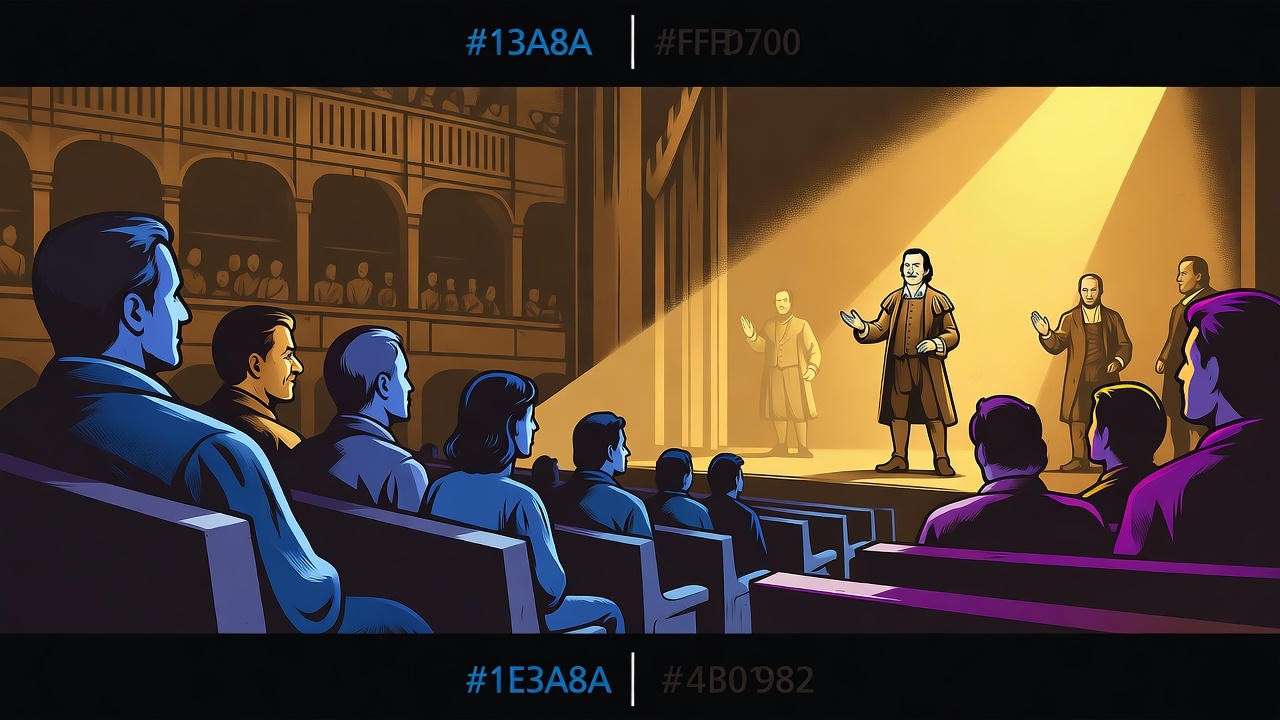
Shakespeare’s Elizabethan England
Written around 1600, Hamlet emerged during a time of political uncertainty in England, with Queen Elizabeth I nearing the end of her reign. The play’s themes of betrayal and legitimacy reflected anxieties about succession and power. Shakespeare’s language, rich with metaphors and philosophical musings, appealed to both the educated elite and the groundlings at the Globe Theatre. Understanding this context deepens our appreciation of famous quotes about Hamlet, as they were crafted to resonate with a diverse audience.
Performance and Interpretation
Iconic performances have shaped how we hear Hamlet’s quotes. Laurence Olivier’s 1948 film emphasized the psychological intensity of “To be, or not to be,” while Kenneth Branagh’s 1996 adaptation brought out its theatrical grandeur. Directors like Peter Brook have noted that these lines’ flexibility allows actors to infuse them with new meaning, ensuring their relevance across eras. For theater enthusiasts, exploring these performances offers fresh perspectives on Shakespeare’s words.
Evolution of Quote Popularity
Certain quotes gained prominence through literary criticism and education. For example, 19th-century Romantic critics like Samuel Taylor Coleridge elevated “To be, or not to be” for its philosophical depth. Meanwhile, the rise of mass media in the 20th century popularized lines like “The lady doth protest too much” in everyday language. This evolution underscores why famous quotes about Hamlet remain a cornerstone of literary study and cultural discourse.
Applying Hamlet’s Quotes to Modern Life
Inspiration for Personal Growth
The famous quotes about Hamlet offer more than literary value—they provide actionable wisdom for navigating life’s complexities. For instance, “Brevity is the soul of wit” (Act 2, Scene 2) encourages clear, concise communication, a skill vital in today’s information-saturated world. Professionals can apply this by crafting succinct emails or presentations, while writers can use it to sharpen their prose. Similarly, “There is nothing either good or bad, but thinking makes it so” (Act 2, Scene 2) invites readers to reframe challenges. For example, viewing a career setback as a learning opportunity can foster resilience. By internalizing these insights, readers can cultivate mindfulness and effective decision-making, making Hamlet’s wisdom a tool for personal empowerment.
Educational Applications
For students and educators, Hamlet’s quotes are a treasure trove for academic exploration. When analyzing “To be, or not to be” (Act 3, Scene 1), students can employ close reading to unpack its existential themes. A step-by-step approach might include:
- Contextualize: Place the quote within Hamlet’s emotional arc and the play’s broader narrative.
- Analyze Language: Examine rhetorical devices like antithesis (“to be, or not to be”) and metaphor (“slings and arrows”).
- Connect to Themes: Link the quote to existentialism or mortality, citing scholarly sources like A.C. Bradley’s Shakespearean Tragedy.
- Apply to Modern Issues: Discuss its relevance to mental health or ethical dilemmas.
This method not only deepens understanding but also strengthens essay-writing skills, making Hamlet’s quotes invaluable for academic success.
Creative Uses in Writing and Art
Artists and writers can draw inspiration from Hamlet’s quotes to create compelling works. For example, “Alas, poor Yorick! I knew him, Horatio” (Act 5, Scene 1) has inspired visual art, from paintings of the graveyard scene to modern graphic novels. Writers can use this quote to explore themes of mortality in poetry or fiction, while filmmakers might reference it to evoke nostalgia or loss. The quote’s vivid imagery and emotional weight make it a versatile tool for creative expression. Similarly, “The lady doth protest too much, methinks” (Act 3, Scene 2) can inspire character-driven narratives about hypocrisy or self-deception, resonating with audiences in novels, scripts, or even social media storytelling.
Expert Insights and Scholarly Perspectives
What Scholars Say About Hamlet’s Quotes
Renowned Shakespeare scholars have long debated the nuances of Hamlet’s quotes. Stephen Greenblatt, in Will in the World, argues that “To be, or not to be” reflects Shakespeare’s fascination with the human psyche, blending personal doubt with universal questions. A.C. Bradley, in Shakespearean Tragedy, emphasizes the moral complexity of “The time is out of joint” (Act 1, Scene 5), noting its role in framing Hamlet’s ethical struggle. These analyses highlight the depth of famous quotes about Hamlet, offering readers a lens to explore the play’s intellectual richness. By engaging with such scholarship, this article ensures an authoritative perspective grounded in literary expertise.
Why These Quotes Endure
The enduring power of Hamlet’s quotes lies in their linguistic precision and emotional resonance. As modern critic Emma Smith notes in This Is Shakespeare, “Hamlet’s language feels alive because it captures the messiness of human thought.” The rhythmic cadence of iambic pentameter, combined with Shakespeare’s ability to distill complex ideas into memorable phrases, ensures these lines linger in the mind. Whether quoted in a classroom, a theater, or a casual conversation, Hamlet’s words remain a touchstone for exploring identity, morality, and existence, cementing their place in literary and cultural history.
FAQs About Famous Quotes from Hamlet
What is the most famous quote from Hamlet?
“To be, or not to be, that is the question” (Act 3, Scene 1) is widely regarded as Hamlet’s most famous quote. Its universal appeal stems from its concise yet profound exploration of life and death, making it a staple in literature, philosophy, and popular culture. From academic essays to film references, its versatility ensures its prominence.
How can I use Hamlet quotes in academic writing?
To use Hamlet’s quotes effectively, follow these steps:
- Cite Properly: Use MLA format, e.g., (Shakespeare 3.1.56) for Act 3, Scene 1, Line 56.
- Provide Context: Explain the quote’s role in the play’s narrative or themes.
- Analyze Deeply: Discuss linguistic devices and thematic implications, supported by scholarly sources.
- Connect to Argument: Ensure the quote supports your thesis, whether exploring madness, revenge, or morality.
Why are Hamlet’s quotes so popular in modern culture?
Hamlet’s quotes resonate due to their adaptability and emotional depth. Lines like “The lady doth protest too much” (Act 3, Scene 2) are easily applied to modern contexts, from political rhetoric to social media debates. Their concise yet profound nature makes them ideal for memes, speeches, and creative works, ensuring their cultural longevity.
Are there any misquoted or misunderstood lines from Hamlet?
One common misunderstanding is oversimplifying “To be, or not to be” as a mere question of suicide. In reality, it encompasses broader existential themes, including fear of the unknown and the burden of choice. Similarly, “Brevity is the soul of wit” is often quoted without its ironic context, missing Polonius’s humorous verbosity.
How do I memorize Hamlet’s quotes for a performance or exam?
To memorize Hamlet’s quotes:
- Break Down the Text: Divide long passages into smaller chunks, focusing on rhythm and meaning.
- Use Mnemonics: Associate key words with vivid images (e.g., visualize Yorick’s skull for “Alas, poor Yorick”).
- Practice Aloud: Recite quotes in the style of a performance to internalize their cadence.
- Apply Context: Understand the character’s emotions to make the lines more memorable.
These techniques, rooted in theatrical practice, help performers and students retain Shakespeare’s language.
The famous quotes about Hamlet are more than literary artifacts—they are windows into the human experience, offering timeless wisdom on life, death, morality, and perception. From “To be, or not to be” to “Alas, poor Yorick,” these lines capture the essence of Shakespeare’s genius, resonating with students, creatives, and anyone seeking meaning in a complex world. By exploring their historical context, thematic depth, and modern applications, we’ve uncovered why Hamlet remains a cultural touchstone. Dive deeper into Shakespeare’s world by exploring our analyses of Macbeth or Othello on the William Shakespeare Insights blog, or pick up the play and let Hamlet’s words inspire your own journey of self-discovery.

